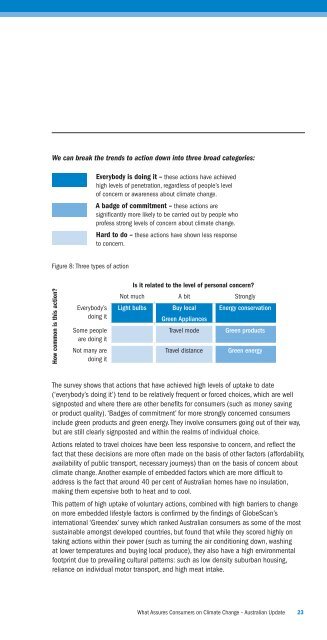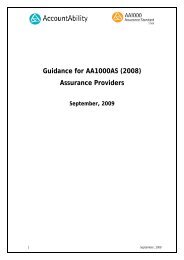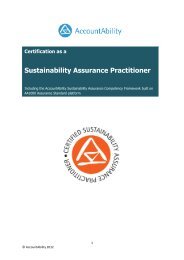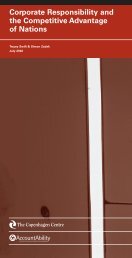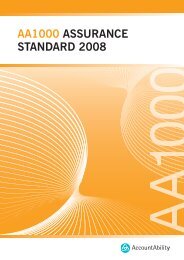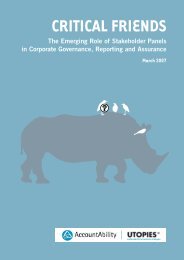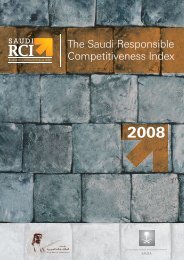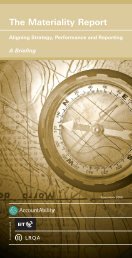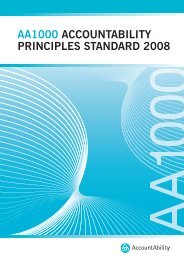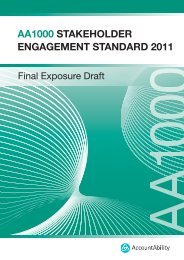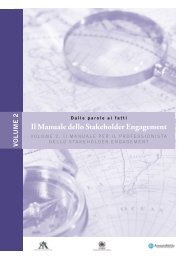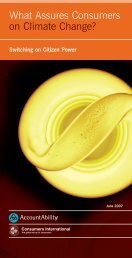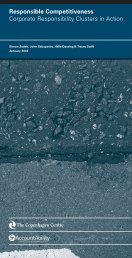Free Download - AccountAbility
Free Download - AccountAbility
Free Download - AccountAbility
- No tags were found...
Create successful ePaper yourself
Turn your PDF publications into a flip-book with our unique Google optimized e-Paper software.
We can break the trends to action down into three broad categories:Everybody is doing it – these actions have achievedhigh levels of penetration, regardless of people’s levelof concern or awareness about climate change.A badge of commitment – these actions aresignifi cantly more likely to be carried out by people whoprofess strong levels of concern about climate change.Hard to do – these actions have shown less responseto concern.Figure 8: Three types of actionHow common is this action?Everybody’sdoing itSome peopleare doing itNot many aredoing itIs it related to the level of personal concern?Not much A bit StronglyLight bulbs Buy local Energy conservationGreen AppliancesTravel mode Green productsTravel distance Green energyThe survey shows that actions that have achieved high levels of uptake to date(‘everybody’s doing it’) tend to be relatively frequent or forced choices, which are wellsignposted and where there are other benefi ts for consumers (such as money savingor product quality). ‘Badges of commitment’ for more strongly concerned consumersinclude green products and green energy. They involve consumers going out of their way,but are still clearly signposted and within the realms of individual choice.Actions related to travel choices have been less responsive to concern, and refl ect thefact that these decisions are more often made on the basis of other factors (affordability,availability of public transport, necessary journeys) than on the basis of concern aboutclimate change. Another example of embedded factors which are more diffi cult toaddress is the fact that around 40 per cent of Australian homes have no insulation,making them expensive both to heat and to cool.This pattern of high uptake of voluntary actions, combined with high barriers to changeon more embedded lifestyle factors is confi rmed by the fi ndings of GlobeScan’sinternational ‘Greendex’ survey which ranked Australian consumers as some of the mostsustainable amongst developed countries, but found that while they scored highly ontaking actions within their power (such as turning the air conditioning down, washingat lower temperatures and buying local produce), they also have a high environmentalfootprint due to prevailing cultural patterns: such as low density suburban housing,reliance on individual motor transport, and high meat intake.What Assures Consumers on Climate Change – Australian Update 23


